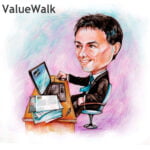Does Magic Formula Investing Work In Hong Kong Stock Market?
Si Fu and Chun Xia
The University of Hong Kong
Abstract
We test the Magic Formula strategy of Greenblatt (2006) in Hong Kong stock market. We rank companies by their return on capital and earnings yield, and then to buy the stocks with the best combined rank. We find that the top 10% of stocks with the best combined rank have an equal-weighted average portfolio return of 2.53% per month while the bottom 10% stocks has only 1.30% average portfolio return per month. We construct six portfolios as the intersections of two portfolios formed on the firm size and three portfolios formed on the combined ranking computed from the magic formula. We show that, for both large and small stock groups, the portfolios of stocks with high rankings from the magic formula outperform the portfolios with low rankings. For the large stocks, the portfolio with high rankings has 14.61% higher annualized return than that with low rankings. For the small stocks, the portfolio return of high ranking stocks is 6.04% higher than that of the low ranking stocks. The time-series regression shows that the risk factor constructed from the ranking calculated from the magic formula has explanatory power to the variation of stock returns in addition to the Fama-French three factors.
[drizzle]Does Magic Formula Investing Work In Hong Kong Stock Market? - Introduction
It is well known that the majority of ideas in finance were either invented or developed in academia, before they crossed over into practice. To name a few, the portfolio theory pioneered by Markowitz (1952), the option pricing theory by Black and Sholes (1973), and Merton (1973), the asset allocation model of Black and Litterman (1992), the low volatility investing of Haugen and Heins (1975) and Ang, Hodrick, Xing and Zhang (2006) have witnessed their broad and extensive applications in the investment industry. It is also true some famous investment strategies were first initiated or discovered by practitioners and then later examined, refined, and extended by finance researchers. Notable examples include the value and growth investing, the momentum strategies. A recent specific example is the "all-weather strategy" popularized by Ray Dalio, the founder of a leading hedge fund Bridgewater Associates. It is also known as the "risk-parity investing" because it aims at creating a portfolio where each included asset class contributes equally to the overall risk of the portfolio.1 This strategy has inspired academic studies such as Qian (2005), Martellini (2008), and Choueifaty and Coignard (2008) as well as many other funds including AQR where their research (Hurst, Johnson, and Ooi, 2010, and Asness, Frazzini, and Pedersen, 2012) has further made the idea of this strategy accessible to both professional and individual investors.
In this chapter we plan to do a similar exercise and choose to exploit the investment idea behind a strategy called the 'magic formula', by back-testing its effectiveness using data from the Hong Kong stock market. This stock-picking strategy is employed by Joel Greenblatt, a value styled manager of the hedge fund Gotham Capital (with asset under management of AUM $2.74 billion in 2013) and an adjunct professor at the Columbia University Graduate School of Business. Greenblatt's investment philosophy presented in his book The Little Book That Beats the Market published in 2006 can be summarized as buying stocks of good companies that have high returns on capital when they're traded at bargain prices so that their earnings yields are high. In other words, the magic formula invests in companies through a ranking system. The higher return on capital and higher earnings yield is a company, the higher the rank this company enjoys. The idea is akin to the famous quote from Warren Buffett: "It's far better to buy a wonderful company at a fair price than a fair company at a wonderful price."
Greenblatt defines the return on capital and earning yield in the following unique way.
where EBIT is the operating earnings before interest and tax, tangible capital employed is the sum of net working capital (NWC) and net fixed asset (NFA), and enterprise value (EV) is the sum of market value of equity (including preferred equity) and net interest bearing debt. We will explain why Greenblatt uses these two definitions instead of more common measures in the next section.
When investing in the stocks traded in the New York Stock Exchange, the magic formula strategy achieved a compound annual return of 30.8% from 1988 to 2004, while the compound annual return of S&P 500 was only 12.4% during the same period.2 The numbers become 22.9% and 12.4% respectively when the strategy was applied to the largest 1000 companies' stocks, all of which had a market value over $1 billion. Greenblatt claims these results can be replicated using a database "Point in Time" from Standard & Poor's Compustat that is free of look-ahead bias and survivorship bias. It is also found that when companies are divided into 10 equal portfolios based on their rankings and the portfolios were rebalanced each month, then the compound annual returns from 1988 to 2004 were ranked in a decreasing manner from the best-ranked portfolio to the worst-ranked one. Alpert (2006) reports that Greenblatt's hedge fund has averaged over 40% annual returns since the 1980s.
See full PDF below.














